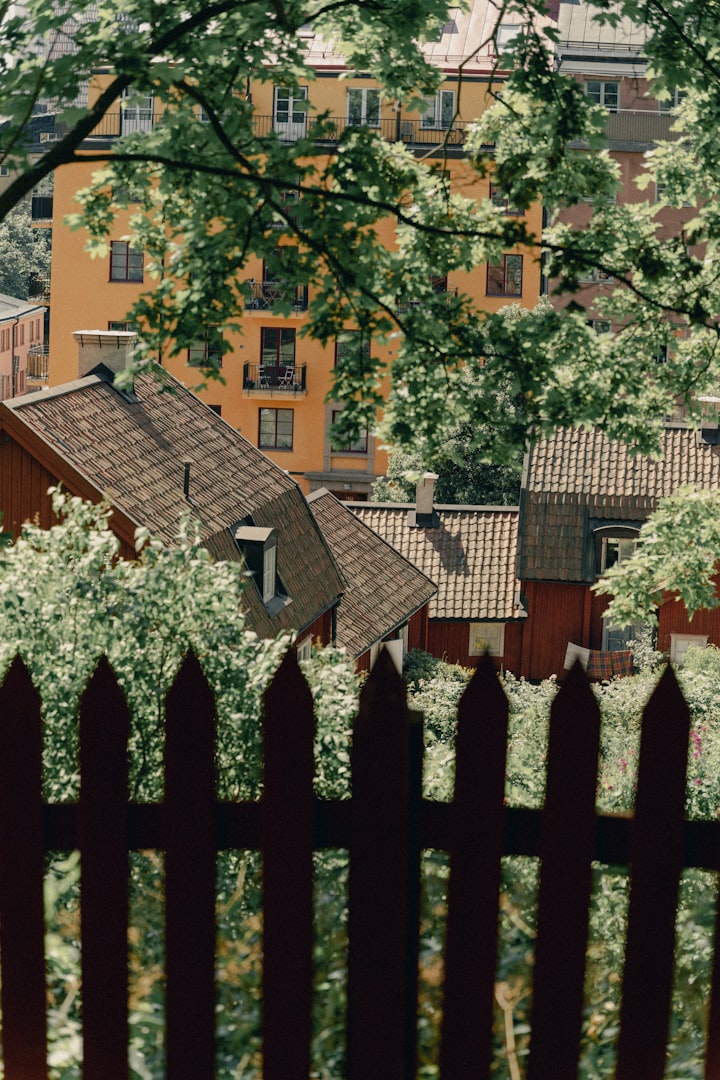
The midsommar:
Midsommar is a haunting and visually stunning film that explores the darkness of grief and the power of tradition. Directed by Ari Aster and starring Florence Pugh, the movie is a horror-drama that is unlike anything you've seen before.
Folklore and tradition:
Midsommar is set in a remote Swedish village that practices an ancient tradition known as the Harga festival. This festival is a celebration of the summer solstice and is steeped in pagan and folklore traditions. The film explores the rituals and customs of this cult-like community and the impact they have on the characters.
One of the most striking aspects of the Harga festival is its use of colorful costumes and face paint. These costumes are adorned with intricate patterns and symbols that are meant to represent the different aspects of the festival. The use of flowers, particularly the May Queen crowns, also plays a significant role in the festival's rituals and customs.
The Harga festival is also characterized by its use of psychedelic drugs and hallucinogens. These substances are used to induce altered states of consciousness, which are believed to be necessary for the rituals and ceremonies. The use of drugs in the film adds to the eerie and unsettling atmosphere, and it also serves as a commentary on the dangers of blindly following tradition.
The film also explores the idea of tradition being passed down through generations. The community's belief in their ancient customs and rituals are unshakable, even if it means sacrificing outsiders or members of their own community. The film's portrayal of the community's rituals and customs is both fascinating and disturbing, and it leaves the audience questioning the true nature of tradition and its place in modern society.
In conclusion, Midsommar's portrayal of folklore and tradition is both captivating and terrifying. It provides a unique perspective on the power of tradition, its ability to bind communities together, and the dangerous consequences of blindly following it.
Symbolism and allegory:
Throughout the film Midsommar, various symbols and allegories are used to convey deeper meaning and to add to the eerie and unsettling atmosphere of the film. The use of symbolism and allegory is a key aspect of the movie and it helps to enhance the audience's understanding of the characters and their journey.
One of the most prominent symbols in the film is the use of flowers. Flowers are used to represent the different stages of grief and the characters' journey through them. For example, the use of white flowers is used to symbolize purity, innocence, and the beginning of the journey, while the use of red flowers is used to symbolize passion, love and the end of the journey.
The use of light and color is also significant in the film. The bright and vibrant colors of the Harga festival contrast with the dark and ominous interiors of the cult's buildings. This serves to create a sense of unease and tension throughout the film and it also represents the different states of mind of the characters.
The use of animals is also a recurring symbol in the film. For example, the bear is a symbol of strength and power, while the deer represents vulnerability and fragility. These symbols are used to represent the different characters and their journey through the film.
Another prominent symbol in the film is the use of mirrors. Mirrors are used to represent the characters' self-reflection and self-discovery. They are also used to represent the characters' search for truth and their journey to find meaning in their lives.
In conclusion, the use of symbolism and allegory in Midsommar is masterful. It adds to the eerie and unsettling atmosphere of the film and it enhances the audience's understanding of the characters and their journey. The symbols used throughout the film are thought-provoking and they leave a lasting impact on the viewer long after the film has ended.
Acting:
Acting is one of the strongest aspects of the film Midsommar. The cast delivers powerful and convincing performances that help to bring the characters to life and keep the audience engaged throughout the film.
Florence Pugh, in particular, shines in her portrayal of Dani, the main character. She manages to convey a wide range of emotions, from heartache to rage, with great authenticity. Her raw and emotional performance is nothing short of outstanding. Pugh's portrayal of Dani's grief and trauma is particularly powerful, and it is a testament to her talent as an actress.
Jack Reynor also delivers a strong performance as Christian, the protagonist's boyfriend. He portrays the character's moral conflicts and inner turmoil with great nuance. Will Poulter, Vilhelm Blomgren and William Jackson Harper also give notable performances as the other members of the group of friends.
The acting in Midsommar is also helped by the film's tight script which gives the actors plenty of room to showcase their talent. The characters are well-developed and their motivations are clear, which allows the actors to fully inhabit their roles.
In conclusion, the acting in Midsommar is one of the film's strongest elements. The performances of the cast are powerful and convincing, and they help to bring the characters to life and keep the audience engaged throughout the film. Florence Pugh's portrayal of Dani is particularly noteworthy and her raw and emotional performance is nothing short of outstanding.
Cinematography:
Midsommar's cinematography is striking and visually impressive. The film's cinematographer, Pawel Pogorzelski, has done an outstanding job in creating a unique visual style that adds to the eerie and unsettling atmosphere of the film.
One of the most striking aspects of the film's cinematography is its use of natural light. The film is set in the Swedish countryside and the cinematographer has skillfully used the natural light to create a sense of unease and tension. The bright and vibrant colors of the Harga festival contrast with the dark and ominous interiors of the cult's buildings. This serves to create a sense of unease and tension throughout the film and it also represents the different states of mind of the characters.
The use of wide-angle lenses, tracking shots, and drone footage are also noteworthy. They give the film a sense of grandeur and scale, and help to convey the vastness and isolation of the setting. The film's use of color is also noteworthy, with the use of vibrant and warm colors in the daylight scenes, and cool and muted tones during the night scenes.
The film's use of close-ups is also noteworthy. They are used to great effect to convey the characters' emotions and to create a sense of intimacy. The film's use of close-ups also helps to convey the characters' isolation and their disconnection from the world around them.
In conclusion, the cinematography in Midsommar is striking and visually impressive. The film's cinematographer has done an outstanding job in creating a unique visual style that adds to the eerie and unsettling atmosphere of the film. The use of natural light, wide-angle lenses, tracking shots, and drone footage, along with the use of color and close-ups, all work together to create a visually stunning film that is both beautiful and terrifying.
Soundtrack:
The soundtrack of Midsommar is an essential element of the film's eerie and unsettling atmosphere. The score, composed by Bobby Krlic, also known as The Haxan Cloak, is an integral part of the film's overall aesthetic, and it helps to create a sense of unease and tension throughout the film.
The film's soundtrack features a mix of traditional Swedish folk music and modern electronic sounds. The use of traditional Swedish folk music helps to create a sense of authenticity and to convey the cultural setting of the film. The use of electronic sounds and experimental techniques, on the other hand, helps to create a sense of unease and to convey the film's surreal and otherworldly atmosphere.
The film's score also features the use of vocal samples and choral arrangements which is used to create a sense of unease and to convey the film's cult-like atmosphere. The use of these techniques is particularly effective during the film's climactic scenes, where the score builds to a crescendo, creating a sense of tension and dread.
The film's use of sound design is also noteworthy. The use of ambient sounds, such as the sound of birds and insects, helps to create a sense of immersion and to convey the natural setting of the film. The use of silence is also used to great effect, as it serves to create a sense of unease and to build tension.
In conclusion, the soundtrack of Midsommar is an essential element of the film's eerie and unsettling atmosphere. The score, composed by Bobby Krlic, is an integral part of the film's overall aesthetic and it helps to create a sense of unease and tension throughout the film. The use of traditional Swedish folk music, electronic sounds, vocal samples, choral arrangements, ambient sounds and silence, all work together to create a soundtrack that is both beautiful and terrifying.
About the Creator
Enjoyed the story? Support the Creator.
Subscribe for free to receive all their stories in your feed. You could also pledge your support or give them a one-off tip, letting them know you appreciate their work.






Comments
There are no comments for this story
Be the first to respond and start the conversation.